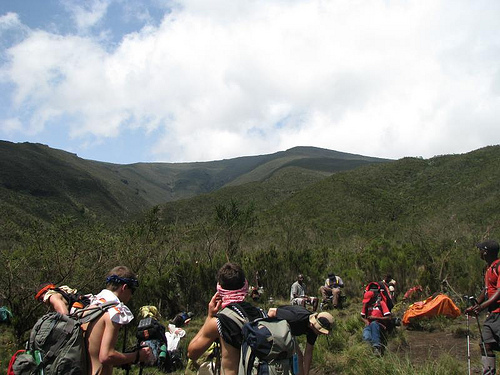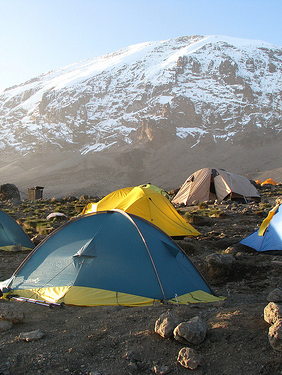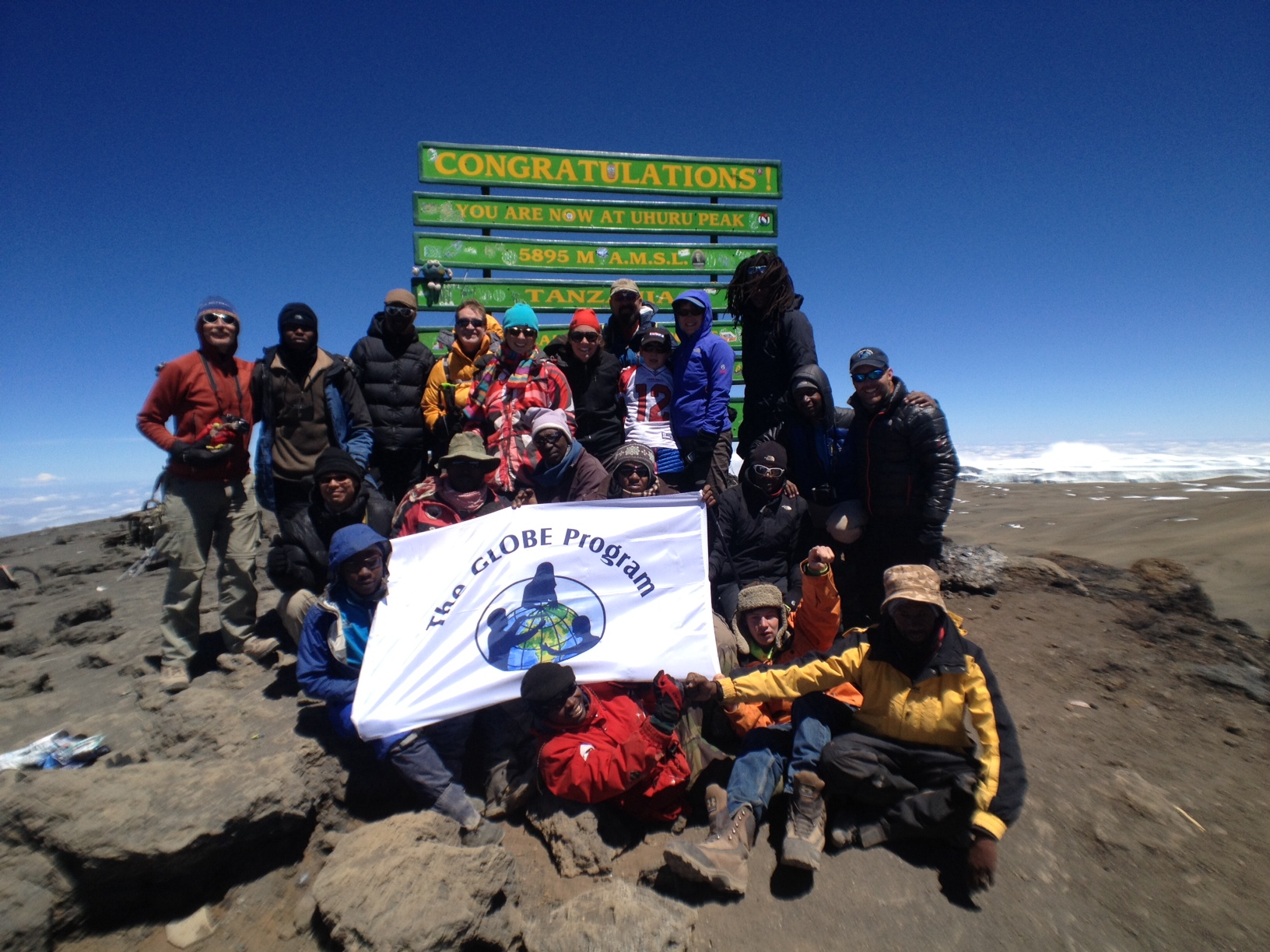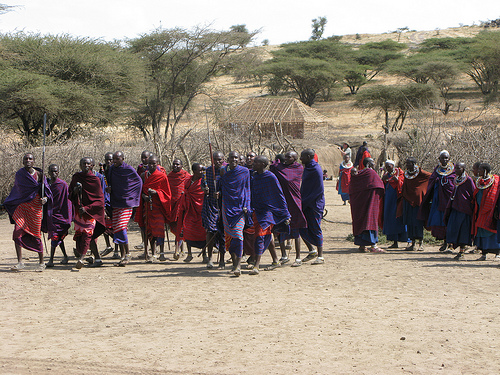Xpedition Blog - GLOBE Xpedition
Climbing Mt. Kilimanjaro - for Science
Maddy, Boulder, CO
09, Oct 2012
As part of the GLOBE Program, a group of students and teachers climbed Mt. Kilimanjaro in Tanzania, a dormant volcano that looms at over 19,000 feet above sea level, in order to do climate research. The numbers they gather will then be used by scientists who are studying glacial melt on Kilimanjaro.
Why this Student Spoke Out
Maddy, a high school student from Boulder, Colo., along with others on the trip decided to document their journey up the mountain in a series of videos and blog posts. Here are some highlights from her trip.
To read the whole blog, plus contributions from other hikers, click here.
Day 1: Basecamp
My expectations [for this trip] are very open-ended! I don't want to get my heart set on anything because I know the mountain is ever-changing and shows us a different trek every year.
Being here has already put so much in perspective: it's so easy to get caught up in myself back home. Here I'm able to take a step back and appreciate how small I truly am, and how much there is to the world. Kilimanjaro was here long before me, and will still be here long after I'm gone.

Day 2: Basecamp to Forest Camp
I've been dreaming about Kili for a few years now, so my mental preparation consisted mostly of trying to keep myself from shaking with excitement in the weeks leading up to departure. I'm very fortunate to live in Colorado, where signs for trails seem to pop up with every intersection.
Day 3: Forest Camp to Shira 1 Camp
Our main goal is to better understand and identify the six unique biomes on the mountain through using GLOBE protocols. We'll use measurements from this trek to compare with past treks, and examine the effects of climate change threatening Kilimanjaro's ecosystem.
Day 7: Karanga Camp to Kosovo Camp
Because of our team -- 5 scientists, 6 teachers and 5 students -- our spectacular guides and porters I've learned more than I would've in school (uh oh!) including some Swahili. (Nina hamu sana… I'm very excited)
We really are in a walking classroom. The hydrology protocols are my favorite, and I love being able to observe how data differs as we climb up the mountain. Finally, my personal growth has been priceless. I've learned so much about myself… my strengths, weaknesses, when I can help others and when I need to ask for help.

Day 9: Special Crater Camp to Summit to Mweka Camp
No matter how hard I try, I can't seem to come up with a description of the summit that will do it justice. After spending the night at Crater Camp, we ate breakfast and explored the closest glacier before beginning our short, hour-long hike to Uhuru Peak. None of us felt great… trying to sleep at over 18,000 feet is almost guaranteed to leave you with a headache. We trudged up to the summit, struggling with the high altitude. And when we finally arrived, every challenging moment of the last 8 days was made worth it. The sky was so pure and blue… untouched by clouds. Instead, the clouds billowed for miles beneath us, looking like pink, purple and white cotton candy (maybe the altitude was getting to me).

Day 10: Mweka Camp to Park Gate
If you asked me the main reason I want to stay in Tanzania, it would be for the people. Porters are the hidden heroes of the mountain—nobody would be able to climb were it not for them. But they also go far beyond just transporting gear: they came to our tent each morning with hot chocolate and cookies to wake us up.
They helped me put my gators on when my fingers were too cold. They sang and danced for us (with us once we got the hang of it!) at least twice a day as we left one camp in the morning and arrived at the next camp in the evening. They carried my daypack when I was not feeling well enough to climb with it. They monitored how well I was taking care of myself, was hydrating and staying energized. They said "Jambo!" or "Mambo vipi!" every time they passed us on the trail. They indulged our "how do you say ____ in Swahili?" questions with enthusiasm each time… sure sounds like a hero to me. I tried to take the time to get to know as many guides and porters as I could, and it sure paid off.
They're genuinely terrific people-- so warm and caring. I know I'll miss them every day, and carry their values and demeanor with me for the rest of my life.

The Global Learning and Observations to Benefit the Environment (GLOBE) program is a worldwide hands-on, primary and secondary school-based science and education program. GLOBE's vision promotes and supports students, teachers and scientists to collaborate on inquiry-based investigations of the environment and the Earth system working in close partnership with NASA, NOAA and NSF Earth System Science Projects (ESSP's) in study and research about the dynamics of Earth's environment.





